Artnet News Pro
Here’s What It Feels Like on the Streets of Basel, Where the Art World Elite Has Agreed to Pretend It’s Still 2019
The art industry found itself again—but at what cost?
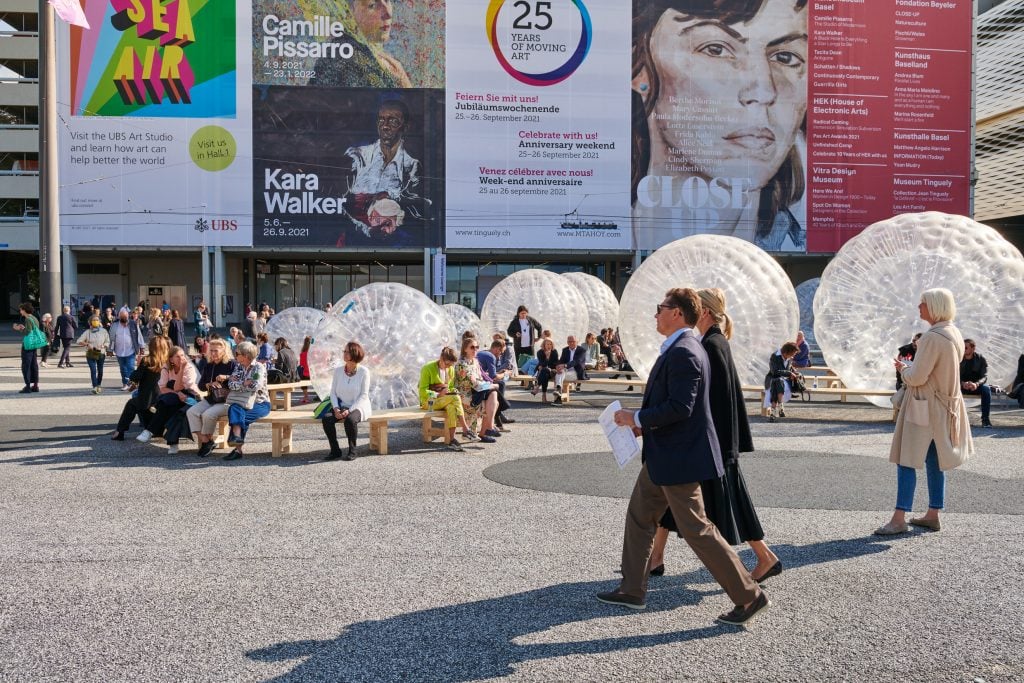
The art industry found itself again—but at what cost?

Kate Brown

An army of huge plastic bubbles squeaked and rolled around the Messeplatz in Basel, glimmering in midday sun. Brightly dressed performers crawled around inside the spheres, tormenting and captivating those of us who had to zigzag around them to get to the COVID check-in center and back to the entrance of Art Basel.
Collector Désiré Feuerle snapped a few pictures of the scene, which was a performance by British artist Monster Chetwynd. Simon de Pury whizzed by. French fashion star Michèle Lamy puffed on a slim cigarette and looked the other way.
Two women in Gucci flats emerged from the cluster of plastic balls looking stunned; the hair on the top of their heads was standing straight up from the static. Without combing it down (it is possible they did not know), the ladies moseyed over to the security line.
A circus is an apt metaphor for an art fair, not least because it is more or less the same show with slight tweaks to the routines as it travels from city to city. During Art Basel’s normal slot in June, the area across the street from the fair is occupied by a literal circus. This year, however, the circus tent has been swapped for a COVID testing one.
Dealers went into the commercial art circus this year with relatively low expectations considering the 11th-hour travel confusion and crowd-control measures against the backdrop of a health crisis. But the show must go on: dealers measured the risks, and 272 galleries from 33 countries opted to join in.
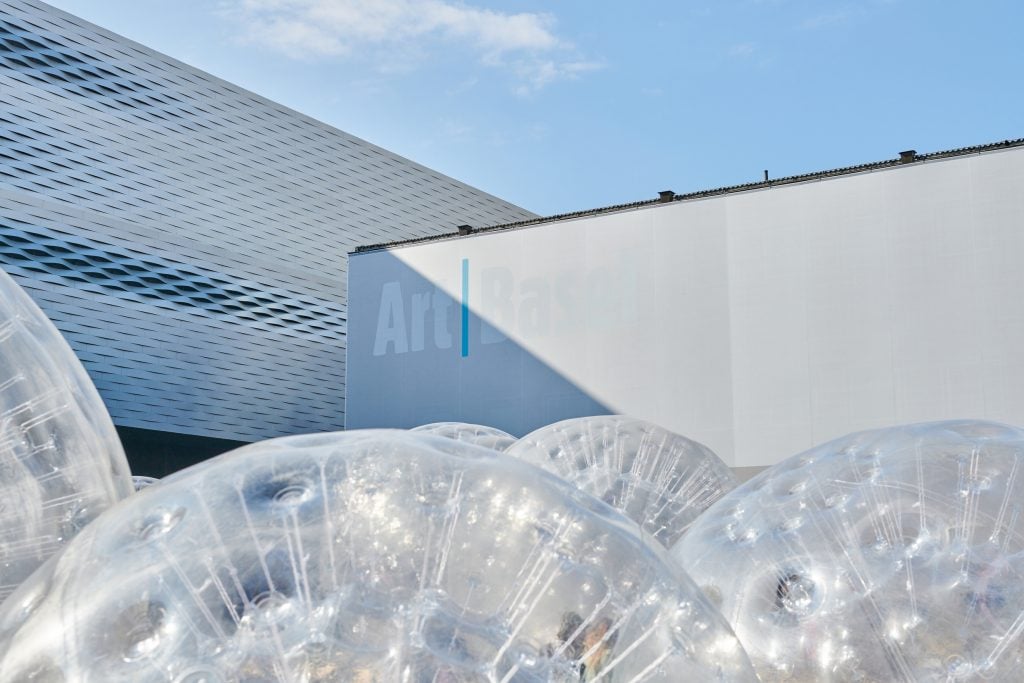
Art Basel 2021. © Art Basel
“It’s like it’s 1995!” Art Cologne fair director Daniel Hug said during the relatively quiet preview day, which seemed to be a boon for more focused conversations. Like all of us, Hug came keenly curious to see what the mood would be at this bellwether event for the art industry, which runs through Sunday.
In art-fair-speak, “good conversations” is usually a euphemism for slow sales. The general consensus is that commerce is not as strong as in 2019, but also far better than the absolute disaster many feared it would be. One dealer said it wasn’t even worth comparing 2019 with 2021: “That was another time period.”
Art Basel tried its absolute hardest to turn back the clock at its first Swiss fair in 18 months. We all partook in some variety of this magical thinking by leaving our worries at the door and shaking off the pandemic, the climate crisis, and the many other tragedies of the past year and a half.
“We needed this fair, we needed it to go well,” a dealer told me with a sigh outside of Basel’s Kunsthalle on Wednesday night. Brimming with optimism (or perhaps more accurately, relief), everyone piled into restaurants to celebrate.
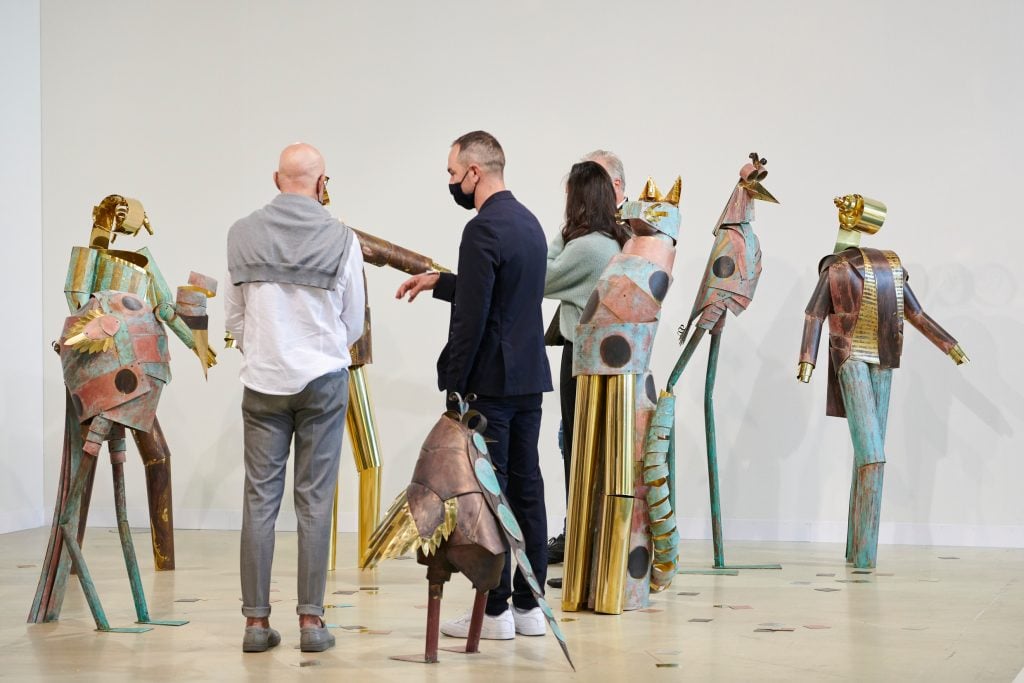
Caroline Mesquita at Union Pacific. © Art Basel
The Kunsthalle is the industry’s de facto watering hole here (N.B.: there are better places to eat in Basel). It is one of those outside-but-inside plastic greenhouses lined with white-cloth tables and a DJ playing late turn-of-the-millennium hits. Each night it is the same with a rotating cast: on Monday, Beatrix Ruf, Hans Ulrich Obrist, and Liam Gillick huddled together to try to hear one another over the music; on Tuesday, Gil Bronner cruised by and Johann König stopped in after dinner elsewhere. And so it goes.
There were some signs that we’d entered a new era. Kenny Schachter and Alain Servais feuded (and made up) on Twitter over whether the fair was better off with American collectors at home. Attendees clasped silky bracelets around their wrists all week to denote that they’d been vaccinated. Masks came on and off when someone couldn’t recognize someone else and Art Basel organized tours with remote VIPs.
But conversations about the uncertain state of things were all but absent. The climate and the pandemic seemed like tired topics to bring up around town. (Loïc Gouzer felt similarly, it seemed, posting on Instagram about 1,400 dolphins slaughtered in Denmark on Thursday and quoting a dealer who apparently told him “we are killing” at Basel.)
Inside the fair, Basel’s ability to bring together world-class art was, as ever, on display. Dealers largely went for roster-wide group presentations (all the better to guarantee sales) and there were too many stunning works to count or see properly. Those that really stood out put cracks of contemplation in the climate-controlled venue.
Neugerriemschneider’s booth, which is always thematically focused, tackled momento mori this year, and with it questions of death and post-nature. If you stepped inside Olafur Eliasson’s moss room there, it muted the surrounding din and bright lights for a moment. A very sinister Ai Weiwei skull and bones chandelier hung at eye level.
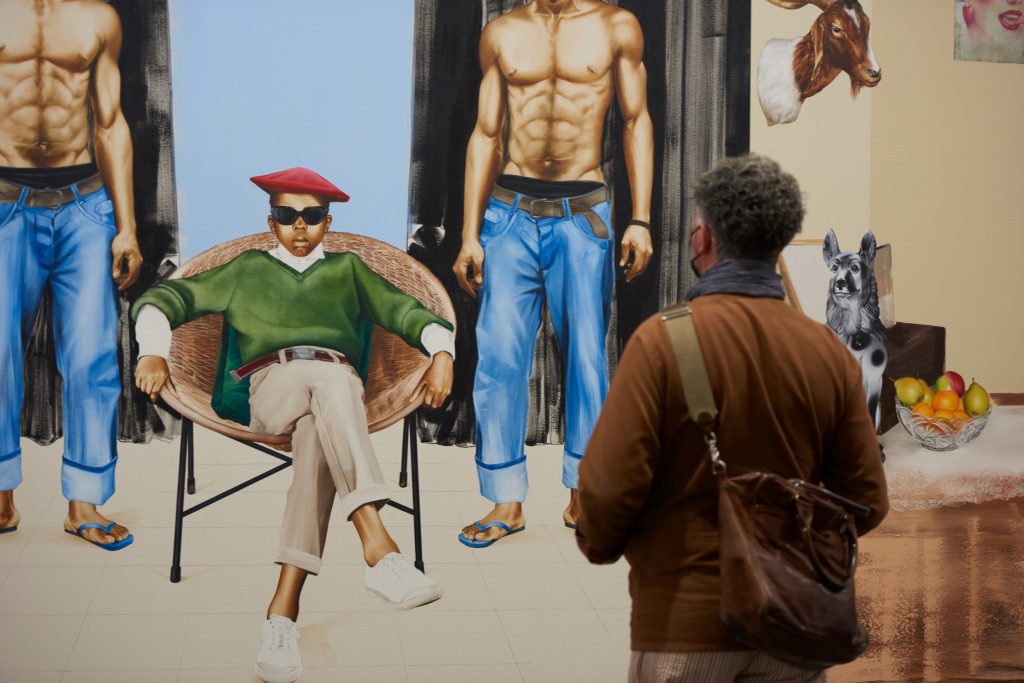
Meleko Mokgosi at Gagosian and Jack Shainman Gallery. © Art Basel
Diamond Stingily’s solo presentation with New York’s Queer Thoughts was another highlight, with a brutal minimalism that referenced the violence within American domesticity. Visitors were free to collect business cards made especially for the presentation. They read: bitch, you gone die.
Maybe we are in a weird art-fair afterlife. An Amsterdam-based dealer dangled this year’s VIP tote bag in front of me, which carried the Bible-size Art Basel catalogue, as we sat on a patio for wine near Claraplatz: “This looks like a tombstone!”
It was an astute observation—the canvas this year is a stoney gray and it’s inscribed with a serif typeface: Art Basel 1970–2020. The nod to the fair’s 50th anniversary was only accidentally morose. Art Basel did what the “2020 Summer Olympics” had done despite taking place in summer 2021—call itself by an old name to travel back to a more secure time (when the merchandise was probably produced).
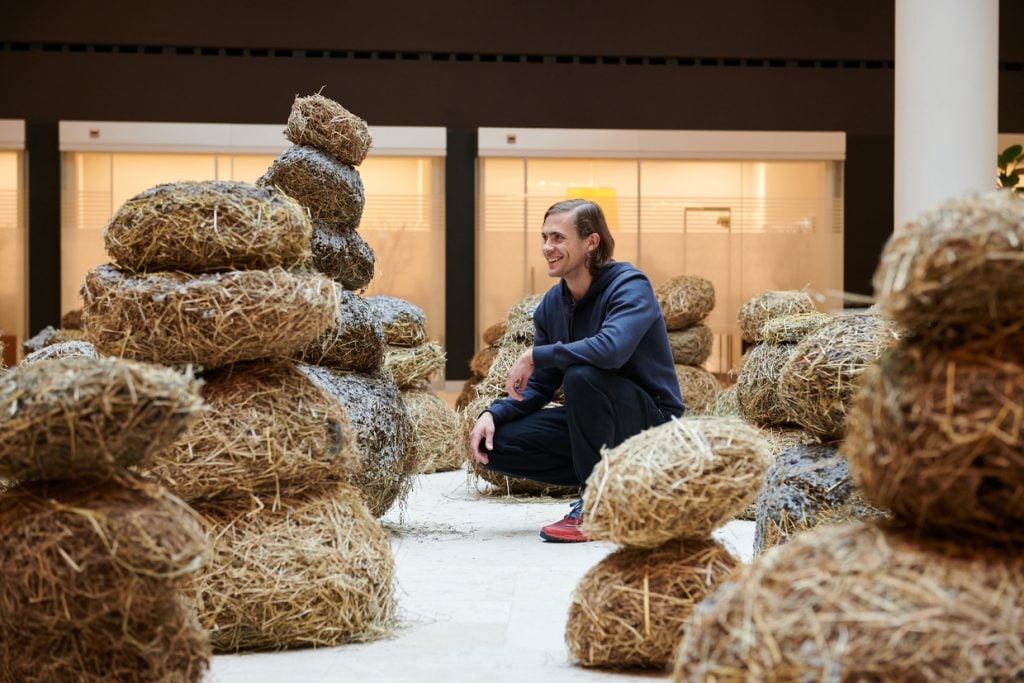
Augustus Serapinas within his installation of Mudmen at Emalin for Parcours. © Art Basel
After a year of being indoors, Art Basel’s Parcours, its en plein air sector spread out across town, had renewed appeal. Works like Lithuanian artist Augustas Serapinas‘s Mudmen brought the grit of nature into the otherwise clean lobby of the Swiss bank UBS. Commissioned by the second Riga International Biennial of Contemporary Art, its little snowmen are made from hay and mud—a nod to the fact that their traditional material is melting away.
“Can We Find Happiness Together Again?” was the name of smartly titled sector, organized by the Swiss curator Samuel Leuenberger. After four days of handshakes, deals, and hot new paintings flying off walls, the conclusion was clear: sure, we can. Muscle memory kicks in. But another question looms ever larger the longer we don’t look it in the eye: at what cost?